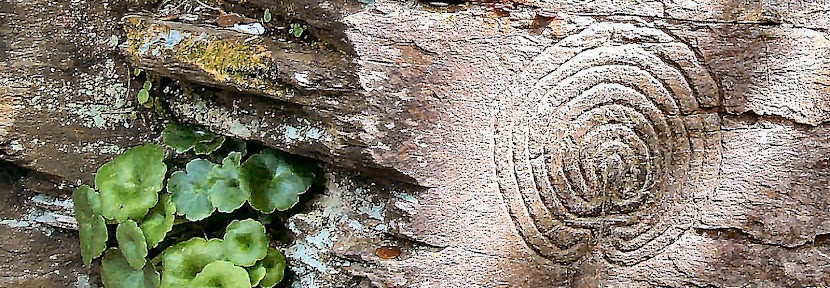In the spring of 2050 BC, a huge oak tree was felled and its stump upturned and half-buried on a site near to what is now Holme-next-the-Sea in Norfolk. The following year, a number of smaller oaks were felled and cut into 56 posts, which were arranged in a circle around the central stump. The Bronze-Age monument, said by some modern archaeologists to be among the most exciting ever discovered, may have formed some kind of religious site, associated with special astronomical significance.
Both the circle and the people who built it were long forgotten before the land on which it stood became submerged by the sea. Its existence had vanished even from folk memory until, almost 4,000 years after its construction, the shifting sands off the East Anglian coast moved again to reveal its presence. The ancient site quickly became known as Sea Henge, and was soon to become very controversial, as English Heritage decided that they were going to remove it and conserve it miles away from its location. Druids and Pagans quickly organised sit-in protests against English Heritage's decision, and a bitter war of words raged right up to the point of removal.
Agreement was eventually reached over the future of the 'henge' and, in the summer of 1999, it was finally recorded and removed to the Flag Fen Bronze Age Centre, near Peterborough. There, as well as being preserved, the ancient timbers were subjected to detailed tree-ring dating. It was from these that a precise date was arrived at for the felling of the trees that make up the Sea Henge circle. The tree rings gave three possible dates, which were narrowed down to just one – 2050 BC – after comparisons with a series of carbon dating tests. The time of year – between April and June – was obtained by an examination of the final growth ring of the main stump, which showed that the tree had been felled in the spring. For further information on the area and Sea Henge visit: http://www.northcoastal.freeserve.co.uk/henge.htm
SEA HENGE RETURNS
The newly refurbished Kings Lynn museum will be the permanent home of the iconic sea henge monument. All the timbers have undergone specialist conservation at the Mary Rose Trust in Portsmouth. Work has included immersing the timbers in a liquid wax solution, which replaced the water and supported the cell structure. The timbers were then freeze-dried to remove any remaining water. The display is set to be completed and open to the public at Easter 2008.
STRANGE DAYS SURROUNDING THE SEA HENGE DEBACLE
A report by Jane Cook
During the Sea henge debacle I was living in Suffolk so I could follow events on the local news that probably never reached the rest of the country. Although I couldn't go to Holme, I managed to contact an elderly gentleman who had lived in the area all his 90 odd years. He said the stumps had been successively covered and uncovered by the sea and sand for as long as he could remember and they had not been significantly worn away. He was furious at what he saw as the interference of English Heritage, insisting the Henge was part of the area and should stay there.
I then contacted English Heritage and put to them that, once removed from their original site, the timbers became nothing but that: lumps of wood. I tried to explain the significance of the placing of such items; the fact that it was done as a form of "earth acupuncture" to modify energy lines in particular places, often in order to avoid undesirable effects. I was met with a response that was little short of abusive. The removal of the timbers went ahead, and they were taken to the Flag Fen Centre in order to undergo archaeological conservation.
Over the following months several news items appeared which I doubt many but myself connected with Sea henge. However, I have never believed in coincidences, and the location of a succession of freak accidents in that area seemed to me significant. One such was the disappearance to two highly experienced sailors - life boat men - who were delivering a boat they had built. They had left in calm weather to travel a few miles along the coast but they never arrived.
The ultimate bizarre event was when the Flag Fen Centre burned down, during January 2000, leaving undamaged only the building that housed the tanks containing the Sea henge timbers. Despite a thorough investigation, a cause for the fire could not be established.
Last week I saw on the news that the Sea henge timbers are finally going on display. What a pointless exercise! Even leaving aside the spate of accidents, surely the resources of English Heritage could have been far better spent.
What do you think? Please let us know.

